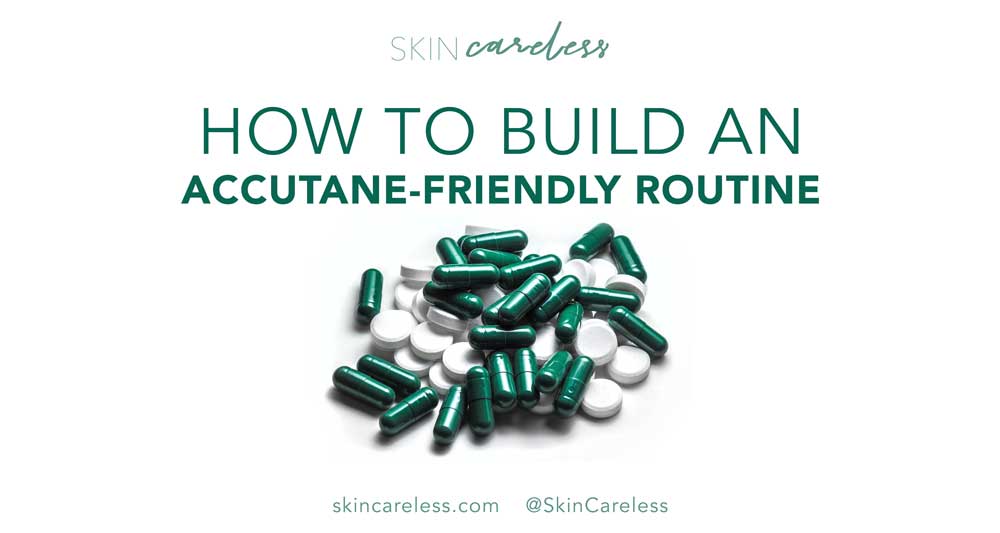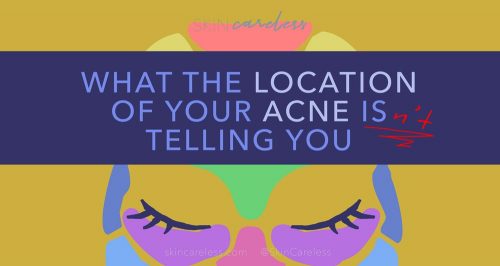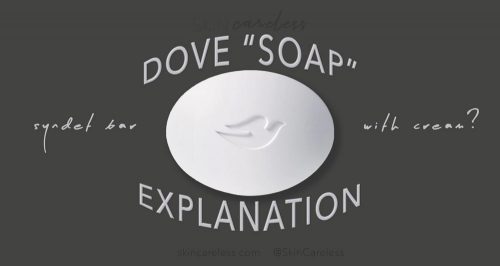Accutane (oral Isotretinoin) is a big deal; for many people, it’s their last-ditch attempt at treating severe and unresponsive acne. It’s also a big deal in the sense of what it does to your body. Accutane makes deep, permanent changes to the skin. These changes can be summed up as “good” overall (in that they essentially eliminate acne in 85% of cases), but they do come with side effects. Namely: dryness.
So it’s natural to want to know: do you need to ditch your current products and bring in a whole new routine when you start on Accutane? That’s what a lot of people seem to suggest, and it makes sense at first, but let’s dive deeper into why that might not be the best idea…
How does Accutane fix acne?
While Accutane boasts many benefits, like how it inhibits keratinization that leads to plugged up pores, reduces acne bacteria and is also anti-inflammatory, it’s thought to mainly improve acne thanks to its ability to reduce sebaceous gland size and lower oil output. Less oil means less food for bacteria, and less junk to become oxidised and thick and congested, fill cysts and irritate the skin. Within 6 weeks, oral isotretinoin reduces oil output by 90%.
What you usually hear about what counts as an Accutane-friendly skin care routine
I’ve read a lot of Accutane skin care guides. Mostly for my personal research in a never-ending quest to fix my supremely oily skin once and for all, but also just out of curiosity.
Because the size of your oil glands dramatically shrinks on Accutane, your skin will move firmly in the “dry” camp. It’s a necessary evil. Most people would gleefully say goodbye to the twice-daily oil blotting and makeup melting off their faces, but might be a little concerned to experience the common side effects of dehydration and sensitivity that come along with chronically dry skin.
To help readers navigate their newfound skin type, typical Accutane routine guides recommend abandoning your current products, and starting an all-new routine that’d designed for desert-dry skin. That usually involves switching to heavy alternatives like a creamy cleanser and an uber-rich, thick moisturiser. Most people used to their previous oily skin wouldn’t be in possession of these already, and so are prompted to throw away all their old products and start over completely.
But is that the right move?
Why suddenly switching to a pre-made Accutane-specific routine isn’t always the best idea
I’m an advocate for creating your own tailored, awesome skin care routine. Despite that, I think people that are new to skin care are actually best off starting with the basic bare-bones all-purpose products. Then, I encourage tweaking products from there gradually over time.
The same goes for those who already have a routine they’re used to: stick to it, and adapt products as your skin or goals change.
Rarely would I suggest a total routine makeover all at once. Yet that’s what most accutane skin care guides seem to suggest.
Here’s why I feel that’s not the best course of action:
New products are wildcards
Changing up your whole routine at once is asking for disaster. Your skin – however clear or broken out it is right now – is exposed to a specific combination of ingredients. If you totally switch that all out at once for an new product lineup, more than likely you’ll break out or have another, worse kind of reaction. And you won’t be able to tell what did it. It’s always smart to swap out one product at a time, just to keep track of any unexpected skin changes and being able to pinpoint the source.
Your skin isn’t about to do a 180 right away
Also, Accutane doesn’t start working overnight. If it did everything it needed to in a few days, accutane courses would be just a few days long, not months and months. The change to the skin, while dramatic, is gradual. It’s best to wait and see how your skin is responding before getting ahead of yourself. If you start to layer on all the oils and creams from Day 1, you’ll likely just overdo it and make your acne worse.
Skin care products are expensive!
Finally, not everybody can afford to totally drop and move on from their current set of products. It’s expensive to buy 5+ new high quality skin care items, not to mention wasteful if you’ve just opened a new bottle. It would be better to strategic buy replacements that better suit your skin over time.
So, should you change your skin care routine at all when you start Accutane?
Yes and no. Doing so with care is the best choice.
It’s far better to take things slow, and remove and replace products strategically and as-needed. Here’s the things that need to stay and what needs to go.
What to absolutely remove from your current routine
Alcohol-based toners & clay masks
It’s time to lose any overly drying products (which you shouldn’t really be using anyway, tsk tsk!). You’re about to get a lot drier and there’s just no need.
Anti-acne topical products (for now)
If you’re on Accutane, you’ve likely also been relying other topical acne products for a while. If you’re used to things like salicylic acid, benzoyl peroxide, Retin-a, Differin etc., you might want to mean off them. Though you might go through a period of worse skin, it’ll really let the results of the Accutane show, and then after your course you can add in acne treatments only as needed with your new less oily skin.
To make the transition easier, reduce the use of these products slowly over the first couple of weeks of your Accutane treatment, to allow time for it to take over and hopefully mitigate any rebound acne.
The main reason it’s important to be conscious of not overloading your skin with these kinds acne treatments while your Accutane is in full effect is because of the dryness and irritation they can cause – which Accutane causes too! Both at once can really wreak havoc on your moisture levels. That brings us to…
What to definitely add to your current routine (if you’re missing it)
Keep a close eye on your skin as you start your course of Accutane. When you decide the dryness is getting to you and it’s time your current routine isn’t cutting it anymore, here’s what you should keep in mind.
Moisturisers
Ideally, you’d already be getting enough hydration. But maybe your oily skin let you get away with less than you needed. no more, because without any surface oil, your skin is just going to evaporate dry and shrivel up. so hydration, occlusion, and a little bit of emollience is key.
Occlusives are the simplest way to change up your routine without disturbing your skin too much. These ointments, oils or heavy creams trap your natural hydration and prevent it from escaping into the air.
An occlusive product like Vaseline can be applied all over, including the lips, after the rest of your skin care routine. And you’ll definitely want to make sure you get your lips, seeing as dryness there is the top skin concern people have after starting Accutane.
Sunscreen
Again: if you’re not using sunscreen already, now is DEFINITELY the time to start! Accutane makes your skin significantly more sensitive to the sun. And you don’t want to just be left with (arguably tougher) dark marks to deal with after your acne has finally healed.
Sample Accutane-friendly skin care routine
This routine is just an example, to help you choose from your current collection or to reference when it comes time to buy a replacement for a product you’re ready to switch out. I’ll tell you what to look for, rather than just a certain product. When in doubt, keep it gentle, basic, affordable and ingredient-focused.
- Cleanser
- Gentle active ingredient (mandelic acid, azelaic acid, niacinamide, vitamin c etc.)
- Hydrating toner/lotion/serum
- Emollient moisturising cream
- Sunscreen (morning only)
- Occlusive ointment (night only)
Final things to consider before starting Accutane
If you’re going through all the effort and expense of going on a course of Accutane, it’s worth getting the most out of it. I highly recommend taking a look at your lifestyle to see if there are things flying under the radar that could be impacting your skin. While you’re at it, make sure your skin care storage and hygiene is tip-top too.
It’s a great idea to learn how to take really good before and after photos, so you can objectively track your Accutane journey. Trust me, you might not feel like taking photos of your skin right now, but you’ll wish you started sooner.
Finally, take it slow and see how your skin responds to starting Accutane. Your skin will be changed for good, so you have all the time in the world to get used to your new routine and try swapping things out one at a time. It could take a few tweaks before you find the combination that works perfectly for you.






[…] means that unless you are still going through puberty, have severe enough acne to justify Accutane (which dries out the skin permanently, but comes with a lot of downsides) or are willing to wait a couple decades, you’re pretty much stuck with the skin type you […]